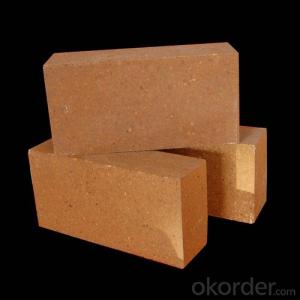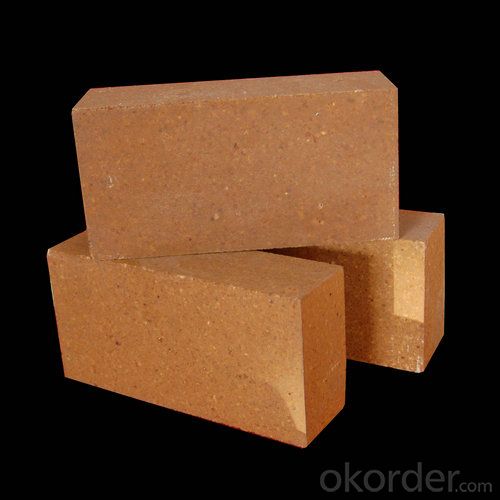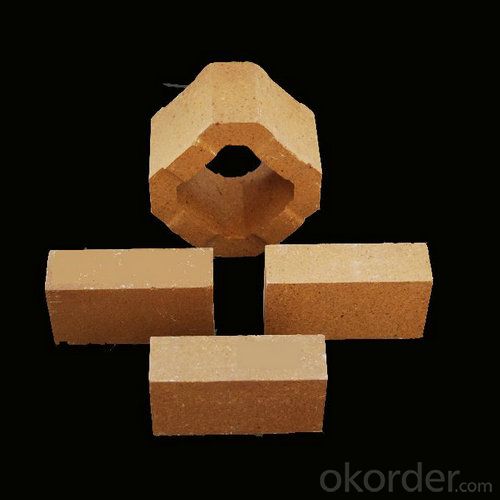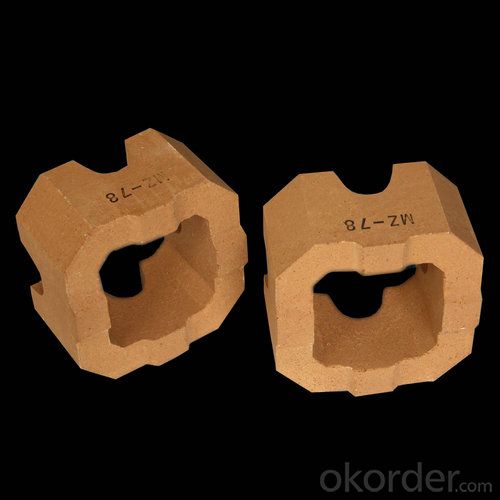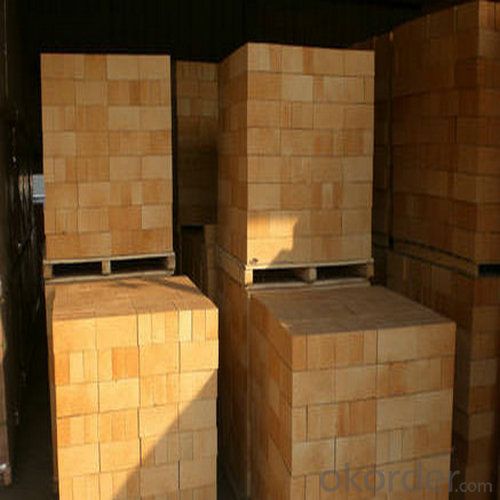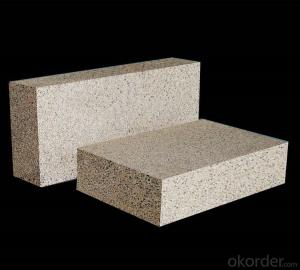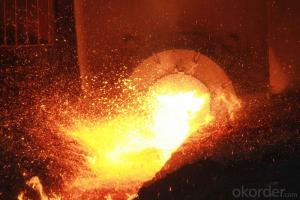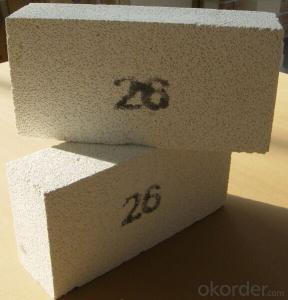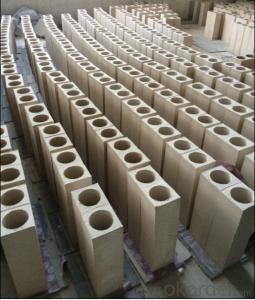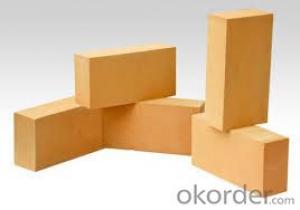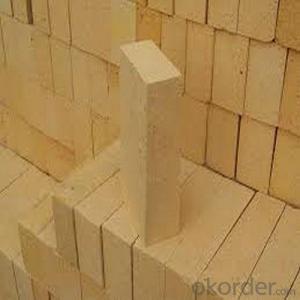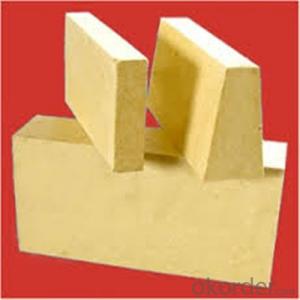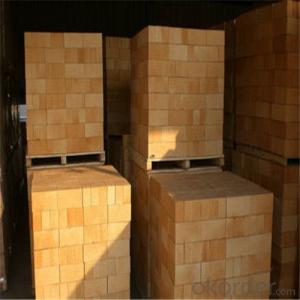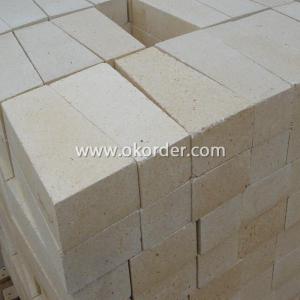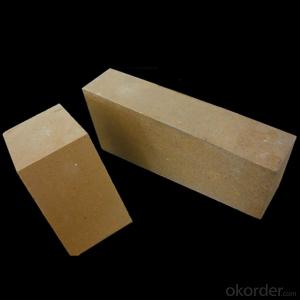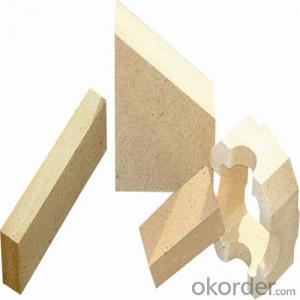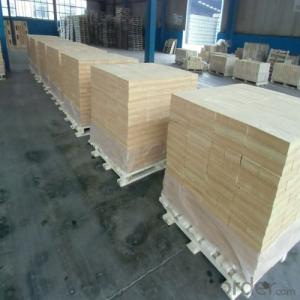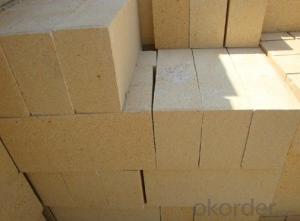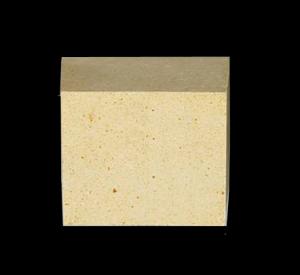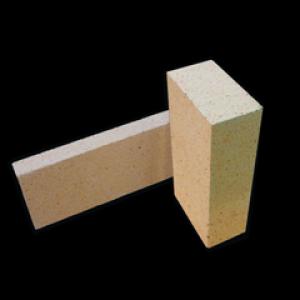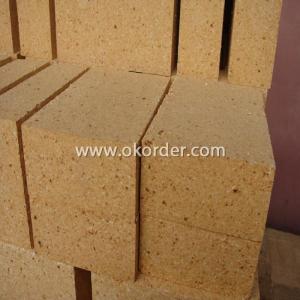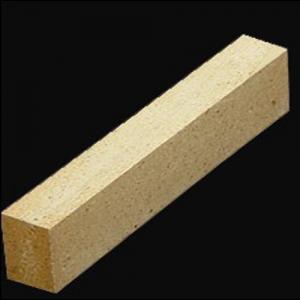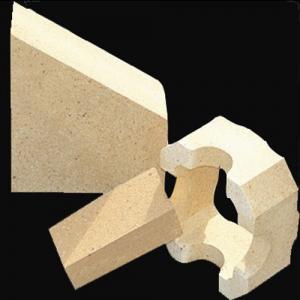Fireclay Brick with RN40 Low Thermal Conductivity
- Loading Port:
- Tianjin
- Payment Terms:
- TT OR LC
- Min Order Qty:
- 1 m.t.
- Supply Capability:
- 20000 m.t./month
OKorder Service Pledge
OKorder Financial Service
You Might Also Like
Description of fireclay bricks
CMAX fireclay bricks are made from clinker clay. The alumina content ranges from 36% to 48%.
Features of fireclay bricks
1. Lower content of iron, alkaline and impurities, good high temperature properties.
2. Homogeneous structure, light weight, energy saving because lower heat storage in the furnace during cooling cycles.
3. High strength, good thermal shock resistance under high temperature.
4. Precise sizes due to grinding and shaping after firing, which meets the requirement of construction.
Applications of fireclay bricks
CMAX fireclay bricks are commonly applied in blast furnace, hot blast furnace, teeming ladle, glass furnace, etc.
Specifications of fireclay bricks
FIRE CLAY BRICK---RN40
Refractoriness (℃) 1730
Bulk Density (g/cm3) ≥2.15
Apparent Porosity (%) ≤24
Cold Crushing Strength (Mpa) ≥28
Refractoriness Under Load (T0.6) (℃) 1430
Reheating Linear Change (%) 1350℃×2h
0 ~-0.3
Chemical Composition (%)
Al2O3 ≥40
Fe2O3 ≤2.0
Images of fireclay bricks
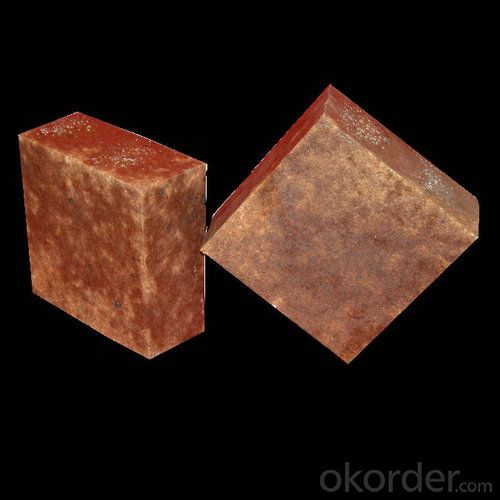
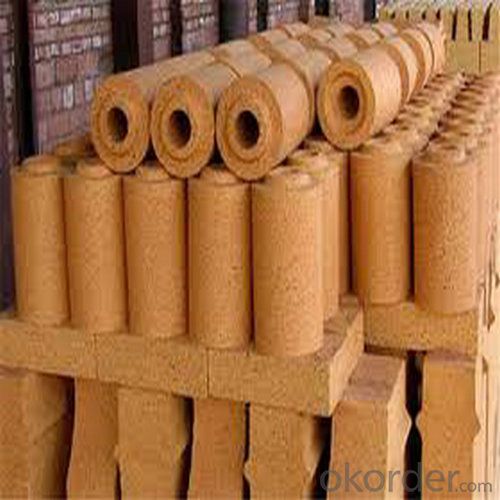
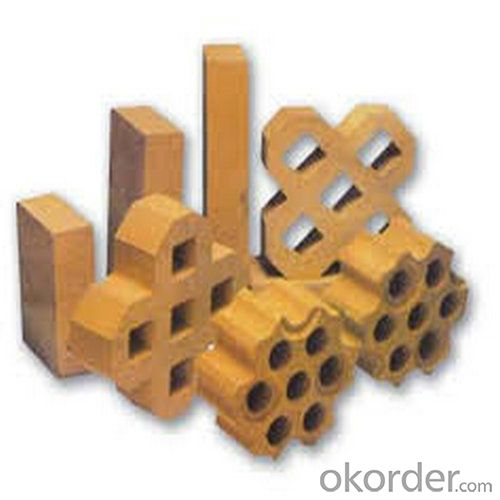
FAQ of fireclay bricks
1. Which products do you have?
We have all kinds of refractory brick, castable, mortar, cement, ceramic fiber products, etc.
Or you could browse our products to choose what you need.
2. Can you give me a general idea of the specification and technical data of your products?
CNBM offer a range of refractory and insulation products. We provide refractory bricks, monolithic refractories as well as ceramic fiber products. And On your given shapes, drawings or description, we are producing refractories with all sizes and shapes, resistant to temperature from 800 °C till 1800 °C, using various machines and equipments for cutting, grinding, drilling, polishing, shaping processes.
Every refractory product by CNBM is of superior quality. Lesser refractory products can not approach. CNBM utilizes proprietary testing methods, testing for chemical content, density, apparent porosity, cold crush strength and modulus of rapture. With stringent quality control, you can count on CNBM products to exceed refractory industry standards and your expectations.
3. Can you give me a brief introduction of the application of your products?
We are mainly specializing in the refractory materials in iron and steel, cement, glass, ceramics, petrochemical, electric power Industry, etc.
4. If I need your offer, what information do you need?
In order to choose suitable products, it will be appreciated to provide us the information, such us specification, technical data, order quantity, products application etc.
If any question, please contact us freely.
- Q: does furnace use refractory cement to make refractory bricks?
- use refractory clay, refractory clay is made of refractory clinker clay mixing with cornstarch in a certain proportion, generally refractory cement refers to alumina?cement, which is generally used in castable refractory, producing binder.
- Q: What types of refractory bricks are divided into?
- The flue has fireproofing time requirements, very expensive, I just know this in my project, using a special refractory brick and fireproof plaster
- Q: Clay brick, red brick, always fried brick how to do?
- Red brick fired, try using a bubble, if not burst, you can use.
- Q: Does circulating fluidized bed boiler's furnace wall use refractory to have thermal insulation?
- Now all use castable refractory, the outer layer is generally pouring refractory castable, the inside layer is a heat insulation castable refractory.
- Q: What are the simple ways to distinguish between excessive clay bricks and less fired clay bricks?
- Generally speaking, compared with the exterior burning brick, the internal combustion brick not only saves the clay and the waste material, but also has smaller volume density, lower thermal conductivity, and can increase the intensity by about 20%. Burnover light color, sound, low intensity; burned brick deep color, crisp sound, high strength, irregular size. These two kinds of bricks are unqualified products.
- Q: What is the proportion of lightweight fireclay bricks?
- The ingredients are mixed with water to form plastic mud or mud, by extrusion molding or casting molding, after drying at 1250-1350 Deg. C oxidation atmosphere sintering. The volume density of commonly used clay bricks is between 0.75-1.2g/cm3. In reality, the proportion is 1.
- Q: The difference between fireclay brick and refractory cilica brick in the application.
- Good thermal shock stability, long-term use temperature is not higher than 1300 degrees, high temperature, high strength, low price of clay brick characteristics, thermal shock stability is the worst, a scrap, can be long-term used under the condition of high temperature (exceed 1400 degrees Celsius) . The temperature of silica brick's soft bearing is close to the melting point. Other industries basically don't use, but the comprehensive performance of high temperature is not good, widely used in low temperature parts of a variety of furnaces. The silica brick is generally used in the coke oven and glass kiln, but anti alkali erosion ability is poor
- Q: Which is the higher price of concrete solid brick and MU15 fired common brick (non clay brick)?
- The price of concrete solid bricks and the price of MU10 bricks are on the same level, and the difference will not exceed two cents a penny. It should be MU15 sinter ordinary brick is more expensive.
- Q: What is the raw material for the production of refractory bricks?
- Refractory raw material, sodium silicate as a binder, and lightweight aggregate, magnesium sand, magnesia calcium. Magnesium Oxide, bauxite, and then lightly burn: Hard refractory clinker
- Q: Can refractory bricks be used to build a house?
- Refractory brick can be used to build houses, but you can not use ordinary cement to build, the cost is 3 times than that of ordinary brick.
Send your message to us
Fireclay Brick with RN40 Low Thermal Conductivity
- Loading Port:
- Tianjin
- Payment Terms:
- TT OR LC
- Min Order Qty:
- 1 m.t.
- Supply Capability:
- 20000 m.t./month
OKorder Service Pledge
OKorder Financial Service
Similar products
Hot products
Hot Searches
Related keywords
